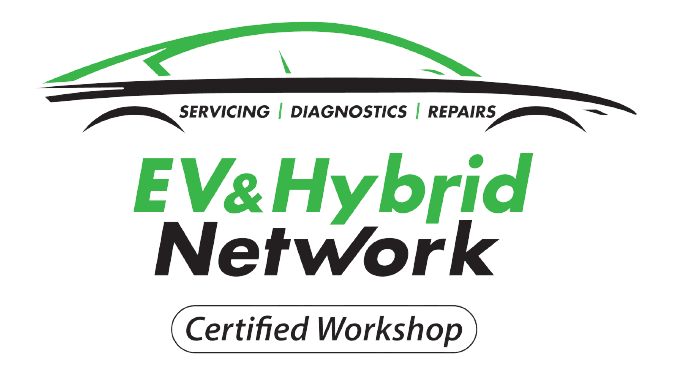When it comes to electric and hybrid vehicles, not all lithium-ion (Li-ion) batteries are created equal. While “Li-ion” is often used as a blanket term, there are several different battery chemistries used across various makes and models—each with its own strengths, limitations, and care requirements.
Understanding which type of battery powers your EV or hybrid can help you make smarter choices when buying, charging, and servicing your vehicle. This guide explains the most common Li-ion chemistries used in Australian vehicles, their characteristics, and practical maintenance tips to help you get the best performance and longevity from your battery.
Common Li-ion Battery Types Used in EVs and Hybrids
1. Lithium Nickel Manganese Cobalt Oxide (NMC)
Commonly found in Hyundai Kona EV, Volkswagen ID.4, Chevrolet Bolt
Best suited for Balanced performance, moderate range, daily commuting
Advantages
- High energy density, providing solid range
- Good balance of cost, performance, and durability
- Widely adopted by mainstream manufacturers
Disadvantages
- Can degrade under high heat if not cooled properly
- Requires careful management to prevent accelerated wear
Maintenance Tips
- Use AC charging for daily use and limit fast charging to longer trips
- Maintain battery charge between 20% and 80%
- Park in shaded areas during summer to reduce thermal stress
2. Lithium Nickel Cobalt Aluminum Oxide (NCA)
Commonly found in Tesla Model S, Model X, Model 3 and Model Y (long-range variants)
Best suited for Long-range driving and performance applications
Advantages
- Very high energy density, resulting in extended range
- Lightweight, improving efficiency and acceleration
Disadvantages
- Higher sensitivity to high loads and fast charging
- Requires robust thermal management systems
Maintenance Tips
- Precondition battery in cold weather before charging
- Avoid fast charging when battery is very cold or very hot
- Charge to 80–90% for routine use and limit deep discharges
3. Lithium Iron Phosphate (LFP)
Commonly found in Tesla Standard Range models, BYD Atto 3, and commercial EVs
Best suited for Urban driving, budget-conscious buyers, fleets
Advantages
- Very long cycle life (3,000–5,000+ charge cycles)
- Chemically stable and thermally safe
- Can be routinely charged to 100% with minimal degradation
Disadvantages
- Lower energy density results in reduced range compared to NMC or NCA
- Poor performance in cold climates unless preconditioning is available
Maintenance Tips
- Regularly charging to 100% is acceptable and even recommended
- Use battery preconditioning if available during colder months
- Limit storage in low temperatures at a low state of charge
4. Lithium Manganese Oxide (LMO)
Commonly found in Early Nissan LEAF models, Mitsubishi i-MiEV, some BMW i3 variants
Best suited for City driving and moderate-range use
Advantages
- High thermal stability, making it safer in hot climates
- Capable of fast charging
- Delivers good power output for stop-start driving
Disadvantages
- Lower energy density than other chemistries
- Shorter overall lifespan unless paired with a secondary chemistry like NMC
Maintenance Tips
- Avoid high heat during charging or storage
- Prefer Level 2 AC charging over frequent use of fast chargers
- Keep battery topped up with regular use to maintain cell health
5. Lithium Titanate (LTO)
Commonly found in Commercial buses, industrial EVs, and fleet vehicles
Best suited for High-frequency charging, commercial operations, extreme temperature environments
Advantages
- Exceptional lifespan (10,000+ cycles)
- Extremely fast charging with minimal degradation
- Performs reliably in both hot and cold conditions
Disadvantages
- Very low energy density, requiring larger battery packs
- Rarely used in passenger vehicles due to size and weight
Maintenance Tips
- Generally low-maintenance due to chemical stability
- Suitable for vehicles needing frequent fast charging
- Ideal for operators who prioritise reliability over range
Why Battery Chemistry Matters
The type of battery chemistry in your EV or hybrid directly impacts several key aspects of ownership:
- Charging habits For example, LFP batteries can safely be charged to 100% every day, while NCA and NMC batteries perform better when charged to 80%.
- Climate suitability LFP may struggle in cold weather, while LTO and NMC are more tolerant of temperature extremes.
- Degradation profile NMC and NCA degrade more quickly under stress, whereas LFP and LTO are much more robust.
- Servicing requirements Understanding your battery chemistry helps technicians tailor diagnostics and SOH (State of Health) testing accurately.
Trust Your Battery Health to EV & Hybrid Network Specialists
Regardless of whether your vehicle runs on NMC, NCA, LFP, LMO or LTO, EV & Hybrid Network workshops are trained and equipped to provide expert battery servicing and diagnostics. Our member workshops use advanced diagnostic tools, perform accurate SOH testing, and stay up to date with the latest industry training to ensure your EV or hybrid is running at its best.
Summary Choosing the Right Battery Chemistry for Your Needs
Here’s a quick overview to help you match your needs to the right battery type:
| Battery Type | Ideal Use Case | Key Traits |
|---|---|---|
| NMC | General use, mixed driving | Balanced performance and lifespan |
| NCA | Long-range, performance | High energy density, sensitive to heat |
| LFP | Short trips, city driving, fleets | Very long life, thermally safe |
| LMO | Urban driving, light EVs | Good power, lower energy density |
| LTO | Commercial, rapid charge cycles | Ultra-durable, very fast charging |
If you’re unsure which battery your vehicle uses or how to best look after it, visit your local EV & Hybrid Network member workshop. Our expert technicians can provide tailored maintenance advice and testing to help you get the most out of your battery, no matter the chemistry.
Stay informed, stay efficient, and keep your EV or hybrid running at its best with expert advice and care from the EV & Hybrid Network.
www.evhybridnetwork.com.au

